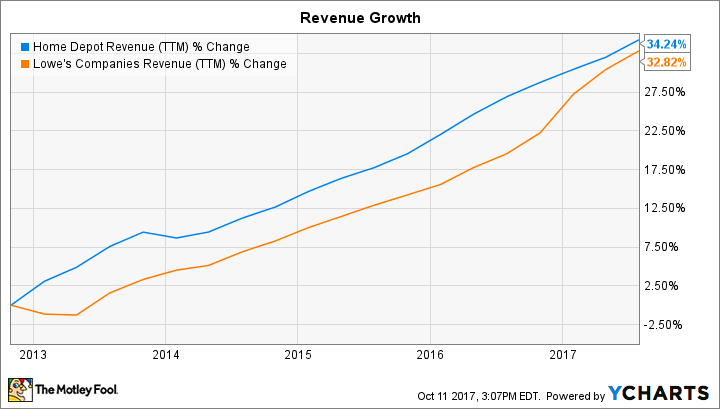|
|
|
Archive for March, 2018
Wednesday, March 14th, 2018

Of all the things I wondered about during the more than 20 years I spent as a tech recruiter was why companies used their most ignorant/untrained/naïve people in “first impression of the company” positions.
This was especially true when it came to hiring where ‘recruiter’ was the entry-level position in HR. It was where you served your time in order to get to the “real” jobs, such as benefits mgr, etc.
As you might guess, talking to a recruiter who couldn’t pronounce what you did, selected you by matching the words on the resume to the words on the job description, and had no glimmer of understanding about the position, wasn’t exactly encouraging to candidates. And the greenest of these recruiters were often the ones sent to handle college recruiting.
One would assume that this would have changed in the nearly 20 years since I left active recruiting. One would also assume that it had changed radically over the recent eight-plus year focus on gender diversity efforts.
One would be wrong.
College recruiters are worse; techincally knowledgable, but incredibally ignorant-to-downright-stupid when trying to engage candidates.
In 2012 and 2013, researchers attended 84 introductory sessions held by 66 companies at an elite West Coast university. (They never explicitly name Stanford, but …) Roughly a quarter of attendees at these one-hour sessions were women, on average. The researchers documented an unwelcoming environment for these women, including sexist jokes and imagery, geeky references, a competitive environment, and an absence of women engineers—all of which intimidated or alienated female recruits.
If you were a woman how interested would you be in those companies?
As a guy, would you want your daughter/sister/wife to work in that environment?
And, obviously, all this applies to the hiring of any under-represented demographic.
The researchers, Alison Wynn, a postdoctoral fellow at Stanford University’s Clayman Institute for Gender Research, and Stanford sociology professor Shelley Correll, have shared their research with both recruiters and others inside the tech companies, with the (to me) expected reaction.
“They’re astonished. They often just don’t know what’s going on in their recruiting sessions.”
Astonishment and ignorance to what’s happening seem to be the standard reaction when anything within a standard process surfaces — recruiting is a process.
One solution is for companies to recognize that first impressions are the most lasting impressions people will have of them, whether they are candidates or customers, and choose/train their people accordingly.
However, if they don’t mirror that positive first impression in their culture, they probably shouldn’t bother in the first place.
Image credit: Tech Jobs Tour
Posted in Communication, Hiring | No Comments »
Tuesday, March 13th, 2018

Way back in 2007 I described what I call the number one best motivator.
Over the years, I’ve found vested self-interest (VSI) to be not only the most powerful people motivator around (…) And the idea must have merit when you consider that a Sudanese cell phone billionaire is using it to incentivize African heads of State to act responsibly.
So, instead of hiring for diversity and the social good, why not hire for greed, pure and simple.
You won’t even need to rationalize your decision, since the data makes it a no-brainer.
Researchers from the Massachusetts Institute of Technology and George Washington University calculated that going from an all-male or all-female team to one with equal representation of men and women correlated with a revenue gain of 41%.
41%! That ain’t chicken feed.
Moreover, the phenomenon is global.
A study of 1,000 companies across 12 countries by McKinsey & Co. showed that those in the top quartile for gender diversity were 21% more likely to have above-average profitability than companies at the bottom of the pile. If companies had a greater balance in ethnicities at work, they would on average perform 33% better than those that don’t. Other studies that McKinsey did in previous years (paywall) yielded similar conclusions.
It seems obvious that women would understand women customers better than men do, but if you doubt it Home Depot is an excellent case study.
Trish Mueller joined HD and became CMO a few years later. She recognized that the data collection showing most purchasers were male was incorrect and the company set out to disversify their market.
In 2013, the Home Depot’s core executive team had a strategy meeting about how the brand could appeal to more customers and markets—like women—and expand their product range. There were two women executives in the room: Mueller and Cara Kinzey (Senior Vice President, Technology). Trish and Cara suggested that the brand’s product range should be as wide as its name. Home Depot included the word “home,” after all, and could expand into product categories like cookware, small appliances, and kitchen accessories.
“Cara and I came at it from a women’s perspective,” Trish says, “without it being that overt.”
They decided to test their ideas on the next Black Friday sale.
They gave their merchants a broad mandate: “If it’s something you can conceive of using in your home, let’s have a conversation about it.”
Some of the home appliances and cookware options they tested proved so successful that they’re now kept long-term inside every store. The Home Depot also had some rather unexpected hits during their Black Friday sales, like a giant fluffy teddy bear that sold for $29.99. “Who would’ve ever thought to see that at Home Depot?,” Mueller says. “But we were sold out in ten minutes, the first year we carried them.”
But is the effort paying off consistently beyond Black Friday?
Unlike smaller rival Lowe’s, Home Depot isn’t aggressively adding to its store base. In fact, it has opened just one new location in the U.S. market since 2013. Yet the retailer is beating Lowe’s in overall revenue growth thanks to its stronger customer traffic.
 Would HD have had the savvy to go after the women’s market without Mueller’s and Kinzey’s viewpoint? Unlikely for guys who thought pink power tools were the answer. Would HD have had the savvy to go after the women’s market without Mueller’s and Kinzey’s viewpoint? Unlikely for guys who thought pink power tools were the answer.
Has it translated to more diverse hiring? It has in Canada (I couldn’t find US stats).
So, for all you guys who have no time for moral imperatives, turn your VSI up to high and do it for greed.
Image credit: Pexels and MotleyFool
Posted in Communication, Culture, Ducks In A Row, Hiring | 1 Comment »
Monday, March 12th, 2018

Poking through 11+ years of posts I find information that’s as useful now as when it was written.
Golden Oldies is a collection of the most relevant and timeless posts during that time.
Diversity hiring is focused on women and minorities (we’ll be talking more about this during the week), but there are other categories that are the focus of negative bias.
Obviously, one is age, school bias is still front and center, and, of course, GPAs. As an ex headhunter, i.e., recruiter, I can tell you that GPAs are a total joke when it comes to great candidates. It’s not that good grades are bad, it’s that GPAs don’t tell much of the story — or at least not the parts that really count. Sam’s story below is a good example of what you miss when you focus mainly on GPAs.
Read other Golden Oldies here.
I have a post today at Leadership Turn (a blog I wrote for b5 Media) that focuses on college student’s grade expectations for “trying really hard.” It’s worth clicking over to read because these are the same people you will be hiring over the next few years. Scary thought.
I said at the end that hiring managers might find it of more value to look at grades a bit differently.
Historically, managers and corporations have considered overall GPAs to be a significant factor when recruiting.
But based on current attitudes towards grade inflation, combined with federal, state and local governments’ focus on funding numbers as opposed to learning, perhaps there is a more useful use of grades.
Let me give you a real world example, I’ll call him Sam.
Sam has a 2.7 GPA, but if you look closer you see a different story.
Sam said that when he started college he not only didn’t bother studying he didn’t really know how. He said his grades in high school were mostly Bs and a few As, but that he never really put out much effort. His first semester was totally in the toilet and he almost flunked out when his GPA hit 1.8.
That was a wake-up call.
Sam buckled down. He started by learning how to study and how to learn and really applied himself.
Third semester his GPA was 2.5; junior year GPA was 3.1; senior year isn’t over. Additionally, the GPA for his major is a solid 3.5.
Sam isn’t getting a lot of interviews; he believes it’s because of that 2.7 GPA and he’s probably right.
But for a manager with an entry level position, Sam is solid gold.
Think about it,
- he knows that he doesn’t know it all;
- he enjoys learning and understands the value of hard work;
- he knows that showing up every day isn’t enough; and
- he realizes that he needs to perform at a high level to have value.
Sure sounds like a valuable employee to me—and one with a lot of potential loyalty to those who can see past the trappings to the real value.
Are you smart enough and confident enough of our interviewing skills to find the Sam hiding in that stack of resumes?
Image credit: flickr
Posted in Golden Oldies, Hiring | No Comments »
Friday, March 9th, 2018

A Friday series exploring Startups and the people who make them go. Read all If the Shoe Fits posts here.
News of a Bay Area exodus has been appearing off and on for a few years.
I saw the latest stats,
But in the last three months of 2017, San Francisco lost more residents to outward migration than any other city in the country, according to data from Redfin, the real estate website. A recent survey by Edelman, the public relations firm, found that 49 percent of Bay Area residents, and 58 percent of Bay Area millennials, were considering moving away.
in and article about a much different group that is becoming disenchanted with it: VCs.
“I’m a little over San Francisco,” said Patrick McKenna, the founder of High Ridge Venture Partners who was also on the bus tour. “It’s so expensive, it’s so congested, and frankly, you also see opportunities in other places.”
In this case, ‘other places’ refers to the Midwest and cities like Detroit.
Which I find amusing, considering that
VCs are known to invest primarily in young, white males, mostly from elite colleges, who are introduced by a trusted source in their network.
They aren’t known for investing in women entrepreneurs
Venture capitalists invested $58.2 billion in companies with all-male founders in 2016. Meanwhile, women received just $1.46 billion in VC money…).
And practically none went to Black women.
Only 11 startups led by Black women have raised more than $1 million in outside funding—and are typically funded by the same three investors.
So here’s the question.
Knowing the personal attributes that VCs look for (and are comfortable with) who will they fund?
Image credit: HikingArtist
Posted in Business info | No Comments »
Thursday, March 8th, 2018

Job hunting can be stressful, but also extremely rewarding should the right role present itself. You deal with learning about the culture, taking time off for interviewing, crafting the perfect resume, and finally going through the processes to come out on the other side with an offer. That offer can be well worth the stress of it all.
What if you had to do all of that with your current employer’s full knowledge that you were interviewing? Would you still go through the process? Does the risk outweigh the reward?
I actually had that scenario presented to me recently. I have a close working relationship with a hiring director at a company I would be open to working for. I love the culture, how they go to market and it would be a career boost for me.
In addition, since I have a close relationship with folks there, the role opening was presented to me versus me applying on a website and hoping they see me.
One problem though.
They asked that I tell my current employer first, before interviewing, so there is no conflict of interest (my current company does business with the target company).
I have been sitting on telling my boss now for five days. Each morning I walk in with a plan to tell him and each day I delay. I have prayed, meditated, asked for a sign in a dream that I am making a good decision in telling a current employer that I am interviewing before I even know if I have the role.
It has been a major stress for me as I know the move would be great, but I feel it’s too much of a risk to show my cards before I even know the outcome.
Today I even contemplated loosening my own moral code, pulling a Hope Hicks and telling a white lie. I was considering saying I had told my boss when in reality I wouldn’t.
Doing this, of course, may be small, but it starts the foundation on the wrong foot. It chips away at who I am.
I want the role, see a future and see a path forward. But through all my gnashing of teeth, I have not felt right putting my family at risk by saying anything to my boss.
The feeling helped me delay, because today I received a call from that director. He asked that I wait to tell my boss. He realized it didn’t need to be done and it wasn’t right of him to put me in that position.
Have you ever felt you had to compromise to get ahead?
Image credit: pixabay.com
Posted in Hiring, Personal Growth, Ryan's Journal | No Comments »
Wednesday, March 7th, 2018

When a new innovation is announced do you ever wonder how much of their own Kool-Aid the founders have drunk?
At how often reality doesn’t support the vision?
And to what lengths they’ll go to prove their vision is reality?
Think Theranos.
Think ride-hailing companies, such as Lyft and Uber.
The vision they sold was that they would lessen traffic congestion.
The reality is far different.
One promise of ride-hailing companies like Uber and Lyft was fewer cars clogging city streets. But studies suggest the opposite: that ride-hailing companies are pulling riders off buses, subways, bicycles and their own feet and putting them in cars instead. (…) One study included surveys of 944 ride-hailing users over four weeks in late 2017 in the Boston area. Nearly six in 10 said they would have used public transportation, walked, biked or skipped the trip if the ride-hailing apps weren’t available.
The reality of that vision is simple. Skip the bus/subway/rail/bike/feet and summon a car to add to the crowd.
And it’s unlikely that antonymous cars will improve things.
If anything, they will likely exacerbate the problem, since they will be even cheaper.
Speaking of Uber and visions.
In spite of the $17.3 billion lavished by investors, Uber’s 2017 loss was $4.5 billion and in its nine years of life it burned thorough $10.7 billion, 2/3 of its total funding — another record.
Wow! That’s some Kool-aid.
Image credit: Rob
Posted in Communication, Entrepreneurs | No Comments »
Tuesday, March 6th, 2018

I find it amusing that of everything I’ve read from a variety of academics, consultants, and other pundits regarding hiring and retaining millennials it is Sharna Goldseker who best described it
Interestingly enough, she wasn’t talking about hiring, but about charitable giving.
Goldseker agreed and said it’s time to do away with the stereotype of millennials as entitled slackers. “What we really saw, the top three reasons for giving among these generations, they’re supporting a mission or cause that fits with my personal values, fulfilling my duty as a person of privilege to give back to society, and seeing that my contribution makes a real difference and the organization has real impact,” she said. “As these people are entering the working world and having more resources, they are caring about values more than valuables, and they’re making choices in alignment with those values.”
“…care about values more than valuables.”
That pretty much says it all.
Of course, values are very much public knowledge, as opposed to a poster on the office wall, which makes them hard to fake.
Think Marc Benioff as opposed to Travis Kalanick and you can’t go wrong.
Image credit: Expert Infantry
Posted in Communication, Culture, Ducks In A Row, Hiring | No Comments »
Monday, March 5th, 2018

Poking through 11+ years of posts I find information that’s as useful now as when it was written.
Golden Oldies is a collection of the most relevant and timeless posts during that time.
Have you ever thought about what makes a great comic? By and large they are timeless, because their subject is people and human emotions and actions are (often unfortunately) steady through time. This is especially true when it comes to bad management as witnessed by the continued popularity of Born Loser, Dilbert and many others.
Read other Golden Oldies here.
Does your newspaper carry The Born Loser by Chip Sansom? Actually, I don’t find Brutus, the main character, to be a loser—just a slightly naive guy who works for an arrogant bully who constantly belittles him.
In the July 26, 2007 panel the dialog is as follows:
Boss: I am looking for a unique spin to put on our new ad campaign—do you have any ideas?
Brutus: Gee, Chief, I’m not sure—are there any ideas you think I should think of?
Boss: Brutus Thornapple, master of thinking inside the box.
it reminded me of managers I’ve known, who, no matter what happened or what feedback they received, never could understand that it was their MAP and their actions, not their people’s, that was the root cause of their under-performing groups.
After all, if you
- ask for input and ridicule those who offer it, why be surprised when you stop receiving input;
- claim that you want to solve problems while they’re still molehills, yet kill the messengers who bring the news, you should expect to grapple with mountainous problems requiring substantially more resources;
- tell people their ideas are stupid, whether directly or circumspectly, or, worse, that they are for thinking of them, why should they offer themselves up for another smack with the verbal two-by-four?
So, before you start ranting or whining about your group’s lack of initiative and innovation, try really listening to yourself and the feedback you get and then look in the mirror—chances are the real culprit will be looking straight back at you.
Image credit: Kleefeld on Comics
Posted in Communication, Culture, Golden Oldies, Motivation | No Comments »
Friday, March 2nd, 2018

A Friday series exploring Startups and the people who make them go. Read all If the Shoe Fits posts here.
Regular readers know I have a thing for CB Insight’s co-founder Anand Sanwal and the newsletter he writes. The great data is a given, but the real draw for me are his common sense and wicked sense of humor, both of which infuse his prose creating an irresistible combination.
Monday’s newsletter shared a contrarian view of failure taken from his presentation at last year’s at SaaStr.
Acknowledging and being ok with failure is one of the best things about the startup community. We now celebrate the act of writing a startup failure post-mortem as courageous. (…) Most are vapid puff-piece post-mortems that talk about being too early to market or suggest investors weren’t committed or offer up trite discussion of why they’ve joined a “larger platform” whose vision aligns with theirs.
Once again Anand is my hero by saying stuff out loud that needs to be said.
I’ve always believed that failure is a learning opportunity, but I never thought it should be enshrined and lauded.
Any more than Mark Zukerberg’s “move fast and break it” should have become a startup mantra.
Anand ends with this comment.
Now, even when you fail, you are a success.
Yup — in Startupland, everyone is a winner.
It reminds me of today’s “everybody gets a trophy” attitude.
Jean M. Twenge, author of The Narcissism Epidemic: Living in the Age of Entitlement. “But the ‘everybody gets a trophy’ mentality basically says that you’re going to get rewarded just for showing up. That won’t build true self-esteem; instead, it builds this empty sense of ‘I’m just fantastic, not because I did anything but just because I’m here.’”
That attitude permeates everything else, so why should Startupland be any different?
Image credit: HikingArtist
Posted in Entrepreneurs, If the Shoe Fits | No Comments »
Thursday, March 1st, 2018

I am reading a book right now called “Think and Grow Rich” by Napoleon Hill. The book was written in 1937 and has stood the test of time. The premise of it is simple. The author spent time with the titans of his time and observed what separated those that amassed great wealth from those that didn’t. I am still reading the book, but what it boils down to is not education, physical abilities, or even intelligence that will grant you success.
It’s mindset and being able to focus your energies towards a goal without stopping.
I am not sure how I stumbled across the book, but I figure if a book from the 1930’s was still being discussed, I should read it.
In my own life I want to attain a certain amount of wealth, but not for wealth alone. In fact, I find the single minded pursuit of money to have an emptiness to it. However, I have found that those who create wealth in a just way can also create an ecosystem around them that can be almost self-sustaining.
Mentorship can be offered to others. Ideas that require capital can be pursued. Innovations can be perfected and causes can be embraced.
If you look at a man like Bill Gates you see a savvy businessman that has spawned an industry and can now use his great wealth to promote positive actions around the world. However, he would never be in that position if he had not been single-minded with his company in the beginning.
I doubt myself constantly or tell myself no when I should say yes.
Abundance comes not from being timid, but by being bold and honest with what you want.
Think of the possibilities you could pursue should you truly embrace who you are. It would be better for everyone!
And without making this seem like a rah rah post about positive thoughts, consider the fact that we have nothing to lose by pursing a better version of ourselves.
I am still working on the book, but I encourage you to try it. Is it going to make you think in a new way? Perhaps, but that can be a positive. The author has some insight and he is genuine with his writing.
What would you do with abundance?
Image credit: Good Reads
Posted in Personal Growth, Reviews & Recommendations, Ryan's Journal | No Comments »
|
 Subscribe to
Subscribe to
MAPping Company Success
About Miki 
Clarify your exec summary, website, etc.
Have a quick question or just want to chat? Feel free to write or call me at 360.335.8054
The 12 Ingredients of a Fillable Req
CheatSheet for InterviewERS
CheatSheet for InterviewEEs™
Give your mind a rest. Here are 4 quick ways to get rid of kinks, break a logjam or juice your creativity!
Creative mousing
Bubblewrap!
Animal innovation
Brain teaser
The latest disaster is here at home; donate to the East Coast recovery efforts now!
Text REDCROSS to 90999 to make a $10 donation or call 00.733.2767. $10 really really does make a difference and you'll never miss it.
And always donate what you can whenever you can
The following accept cash and in-kind donations: Doctors Without Borders, UNICEF, Red Cross, World Food Program, Save the Children
*/
?>About Miki
About KG
Clarify your exec summary, website, marketing collateral, etc.
Have a question or just want to chat @ no cost? Feel free to write
Download useful assistance now.
Entrepreneurs face difficulties that are hard for most people to imagine, let alone understand. You can find anonymous help and connections that do understand at 7 cups of tea.
Crises never end.
$10 really does make a difference and you’ll never miss it,
while $10 a month has exponential power.
Always donate what you can whenever you can.
The following accept cash and in-kind donations:
|















